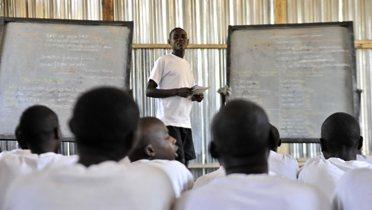If you are a child in Africa today, you stand a much greater chance of attending primary school than you would have 10 or 20 years ago. According to the World Bank, the 1990 primary enrollment rate across sub-Saharan Africa was 53 percent. Since then the rate has increased considerably—in 2008 it surpassed 75 percent. Indeed, the proportion of enrolled children has increased at a faster rate in Africa than in any other region of the world.
This progress is largely credited to African governments, with support from the international community. In the past decade, since the 2000 launch of the United Nations Millennium Development Goals (MDGs), countries in the region have focused on enrolling more children in primary school, and on enrolling boys and girls in equal numbers.
Underlying this promising progress is a fundamental shift in social norms. Fifty years ago, with little exception, schooling in sub-Saharan Africa was for the sons of tribal chiefs. Schools prepared local elites for running state bureaucracies. The long tail of colonialism helped entrench views among the general public that education was a good to be rationed and apportioned for a select few.
Citation
Winthrop, R. (2011). Education in Africa — The Story Isn’t Over.
Current History, vol. 110, May 2011.
The Brookings Institution is committed to quality, independence, and impact.
We are supported by a diverse array of funders. In line with our values and policies, each Brookings publication represents the sole views of its author(s).




